Celery is a green leafy vegetable that has an excellent taste. It is eaten by both people and animals and it is highly nutritious. It is also one of the most ancient veggies to be cultivated. In this article we are going to talk about our cute little guinea pigs and if they can have celery in their diet plan.
Can guinea pigs eat celery? Guinea pigs can eat celery but in moderate serving sizes and only a few times per week. The reason for this is a low amount of vitamin C and high levels of oxalates present in celery. Even without high amounts of vitamin C, celery is a very nutritious vegetable and has a low caloric content which is good for the guinea pigs.
Now that you know that guinea pigs can eat celery, you also need to know more about the benefits, nutrients, and risks associated with this leafy vegetable. Keep reading to find out more about celery and guinea pigs. Let’s start!
Table of Content
Is Celery Good for Guinea Pigs? | Health Benefits
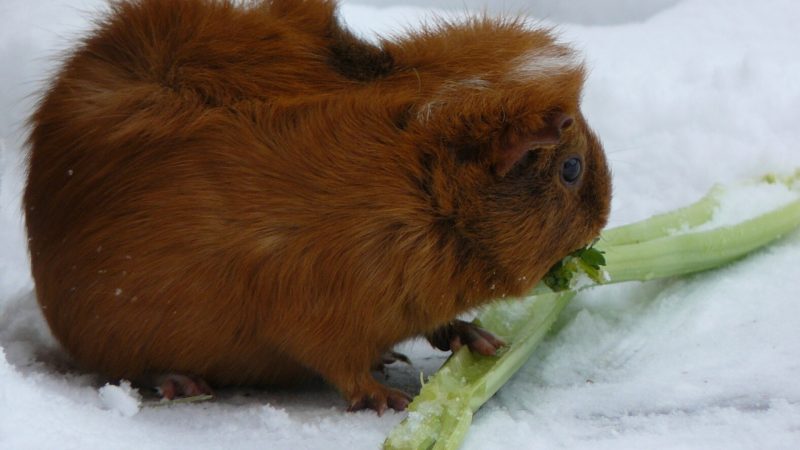
Celery is a green leafy vegetable that has many benefits for your guinea pig. One of the best things when it comes to celery is its low-calorie content. The following are some of the benefits of feeding your guinea pig with celery:
- Helps the cardiovascular system. Celery has vitamins that help the heart perform better. This veggie can help your guinea pig live longer and healthier.
- Celery helps the digestive tract. Guinea pigs usually have problems with the digestive tract, and that is why they need assistance for different foods. Celery happens to be one of the vegetables that aid in the digestion process due to the presence of dietary fiber. This also helps to control bowel movement.
- Prevents inflammation. Celery has been found to contain apigenin that is responsible for the prevention of inflammation in guinea pigs.
- Lowers blood pressure. Blood pressure should be maintained at optimum levels for the guinea pig to lead a healthy life.
- Reduces the risk of hyperlipidemia. This is a condition where fatty molecules increase in the bloodstream. Celery works to reduce the risk of this condition which can affect the heart health of your guinea pig and also lead to sudden death.
- Helps in neurogenesis. This is the growth and development of cells in the body. Apigenin that is found in celery is known to help in this process.
- Water retention ability. Celery has excellent water retention ability that helps the guinea pig to store water that it needs for survival.
- Helps to prevent muscle spasms. Guinea pigs sometimes suffer from muscle spasms that happen due to an imbalance in their body. That is why you need to give them celery to reduce or prevent such occurrences.
- Helps in the elimination of free radicals in the body. The presence of numerous nutrients in celery including antioxidants helps it in the removal of free radicals that may affect its health.
Nutrition Facts of Celery for Guinea Pigs
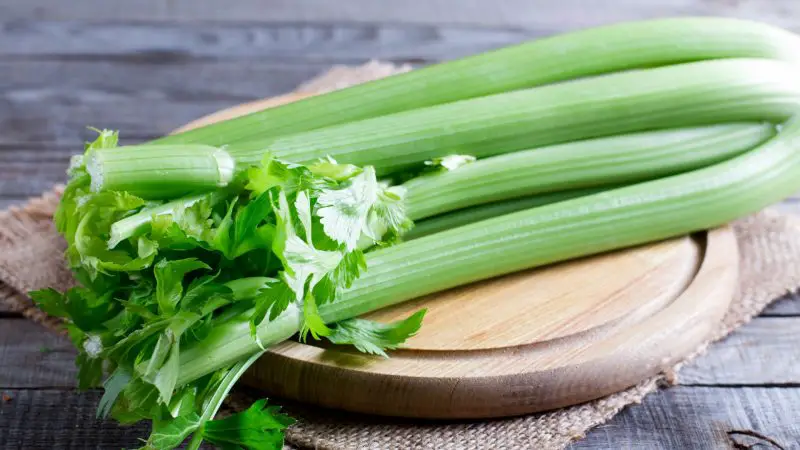
The fact that celery has numerous benefits is enough reason to believe that it is rich in nutrients. A nutrient-potent leafy vegetable is a healthy choice for your cavy in terms of growth and sustainability.
First of all, celeries are filled with antioxidants which we have seen above are responsible for the elimination of free radicals. Also, the following are some of the other nutrients found in celery (100 g):
- Dietary fiber – 1.6 g
- Vitamin K – 37%
- Vitamin C – 5%
- Sodium – 80 mg
- Vitamin A – 9%
- Potassium – 260 mg
- Folate – 9%
- Phenolic acids – 2%
- Phytosterols – 6.0 mg
Is Celery Bad for Guinea Pigs? | Possible Risks
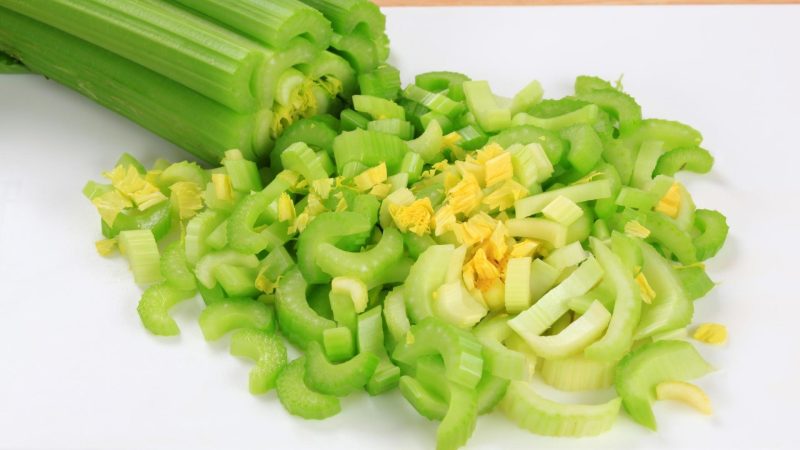
In this world, everything has its bad sides and celery is no exception. Therefore, it would only be fair to look at the negative side of feeding your guinea pig with celery.
The following are some of the health risks that can face your guinea pig if fed with celery:
Presence of Oxalates
Celery is ranked among vegetables that have high levels of oxalates. Oxalates are freely occurring compounds that may lead to kidney and bladder stones in your little pet.
Among the species that are most prone to getting urinary tract infections are guinea pigs. For this reason, you need to feed the cavy limited amounts of celery as opposed to daily feeding.
Allergic Reactions
Celery has the potential to cause allergic reactions to your guinea pig. Although this happens rarely, it is something that can affect your guinea pig.
In case you notice any strange reactions on your guinea pig after feeding it celery, you can stop the process immediately and administer water as first aid. If the condition worsens, you can always seek medical attention from the nearest vet.
High Sodium Content
Celery is one of the vegetables that have a high level of sodium. Too much sodium is harmful to your guinea pig and can potentially affect the well-being of your little pet.
Serving Size and Frequency of Celeries for Guinea Pigs
Celery, just like any other vegetable and fruit, should be given in moderation to guinea pigs. You cannot give your cavy more celery just because it is enjoying it.
You need to know that you are the one responsible for your pet since it cannot make fundamental decisions on its own. If it is fed too much celery, some possible complications and disorders may come up.
- Frequency: You can feed your guinea pig with celery at most twice or three times a week. Combining the diet with other foods will be quite beneficial for your guinea pig’s health.
- Serving Size: As for the serving size, don’t give them to much. Half a cup of celery is more than enough for guinea pigs.
How to Prepare Celery for Your Guinea Pigs? | A Simple Guide
The preparation of the celery for your guinea pig is the same as for any vegetable. It’s easy to make but still, people often forget some basic things when preparing vegetables for guinea pigs.
This is a simple step by step guide on how to prepare celery for your guinea pig:
Step 1: Choose a fresh piece of celery. Don’t give your guinea pigs rotten or yellow celery leaves. Always give them something that you would eat as well.
Step 2: Take a certain amount of celery and wash it thoroughly. This step is extremely important, so make sure to wash celery properly, because sometimes there could be some leftover dirt or even insects. Also, this is good in order to minimize the pesticide effect.
Step 3: Separate the stalks. They are not really pleasant for guinea pigs and they avoid it because it can be really tough to eat.
Step 4: Slice celery into smaller pieces and feed it to your guinea pig. Always clean the cage after the guinea pig is done eating in order to keep their environment clean.
If your guinea pig doesn’t eat start eating celery, you can mix celery with other vegetables or even with fruits. That way, your guinea pig will have celery salad.
More Information About Celery and Guinea Pigs
Can Guinea Pigs Eat Celery Sticks (Celery Stalks)?
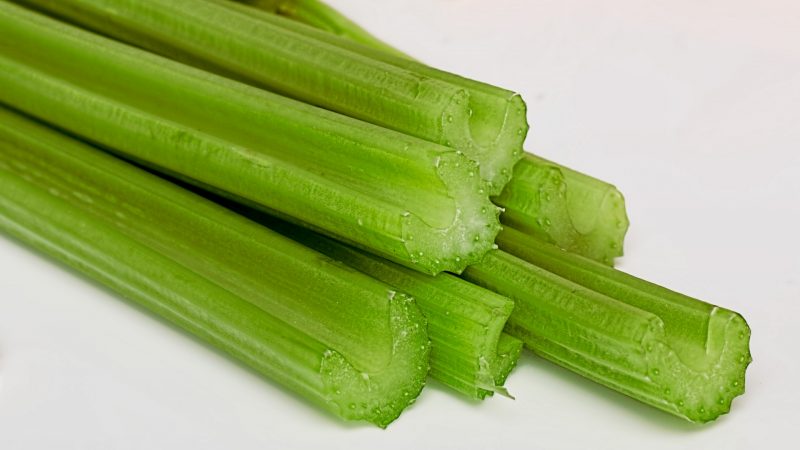
Guinea pigs can eat celery sticks or celery stalks. The important thing is that you need to be careful with the portion of the celery stick that you give to your guinea pig.
One celery stick contains a huge amount of water that can cause urinary problems. So, you shouldn’t give an entire celery stalk to your little pet.
Also, it’s important that guinea pigs consume celery stalks properly. You can cut the celery stick into smaller parts or peel it in order to remove the strings (de-thread) of the celery.
Can Guinea Pigs Eat Celery Leaves (Celery Top)?
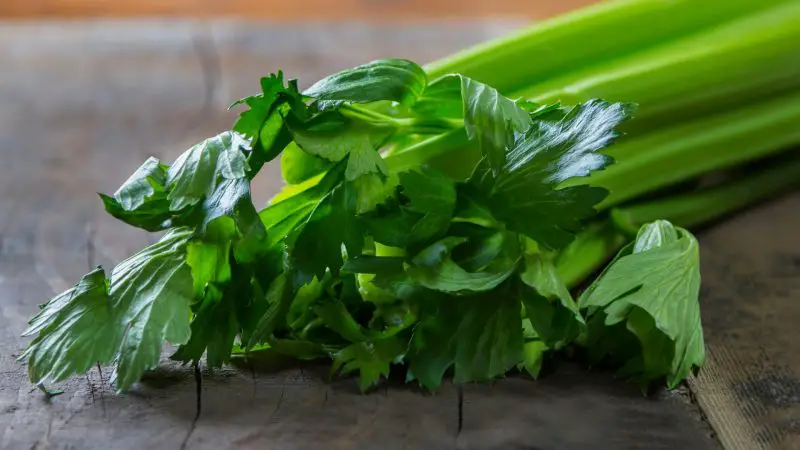
Guinea pigs can eat celery leaves, but you need to be careful with the serving size. Too many celery leaves can cause urinary tract stones because of the high levels of oxalates present in them.
Just don’t give them a lot of celery leaves daily, you can mix celery leaves with other vegetables and fruits that your guinea pig loves. That way you are reducing the serving size of the celery and you are at the same time giving them a rich diet with other vegetables or fruits.
Many people ask us, “Are celery leaves poisonous for guinea pigs?” No celery leaves are not poisonous in normal amounts to guinea pigs. With daily consumption and large serving sizes of the celery, it can present a problem to their health.
Can Guinea Pigs Eat Celery Roots?
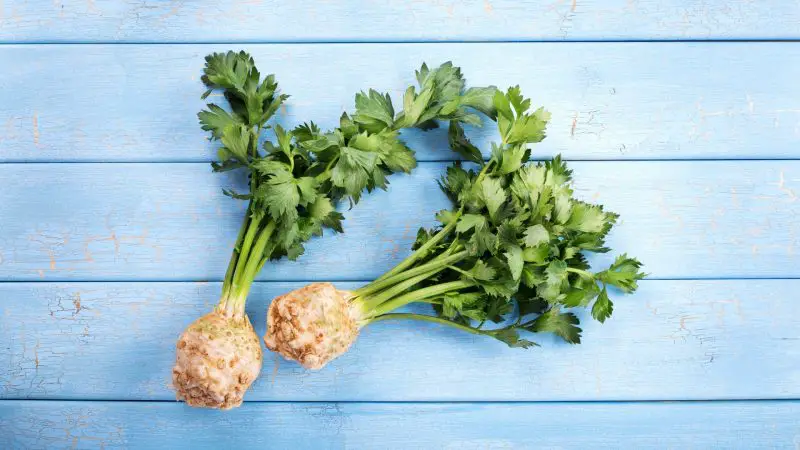
Guinea pigs can eat celery roots. It is safe to feed them with celery roots but you should wash them well and clean them before feeding the guinea pigs because they can contain some amounts of fertilizers or chemicals.
We recommended avoiding giving them celery roots very often. Give them celery root only as an occasional treat.
Can I Give My Guinea Pig Cooked Celery?
Guinea pigs do not eat cooked food. This means you can’t feed your guinea pig with cooked celery. They don’t enjoy it and it doesn’t help them too. This is because cooking celery, for instance, would only result in destroying the nutrients and minerals present in the vegetable thus making it useless.
On the other hand, feeding your little piggies raw celery is not only healthy for them but they also love it that way. Always feed your guinea pig fresh celery and not one that has been stored for too long.
Do Guinea Pigs Like Celery?
Most of the guinea pigs love eating celery but that doesn’t mean that every guinea pig will love celery. Some guinea pigs like celery, some don’t. That is the case with any other vegetable.
Guinea pigs like the leaves of celery, while some of them prefer more the stalks of the celery. They love celery because it contains high amounts of water, which allows them to hydrate. If your guinea pig doesn’t like celery, try to give it mixed with other vegetables.
Quick Facts on Celery
You may already be aware that celery is a green leafy vegetable. Even if you know some info about it, you are probably curious to know a little bit more about the plant. The following are some of the quick facts about celery:
- Celery cultivation started over 3000 years ago.
- It was first cultivated in the Mediterranean region.
- Celery does well in a temperate climate.
- Celery has medical and cosmetic uses.
- Its growth can go up to a height of 3.3 feet.
- The celery has an end of life cycle after every two years.
- In ancient times, celery was used as a bouquet of flowers to reward athletes who emerged winners in Greece.
- In the past, Romans used celery as an aphrodisiac.
- All the parts of the celery plant can be eaten.
- Celery became a part of the human diet in Italy during the 16th century.
- It was used to treat some ailments including insomnia, toothache, anxiety, hypertension and to purify the blood.
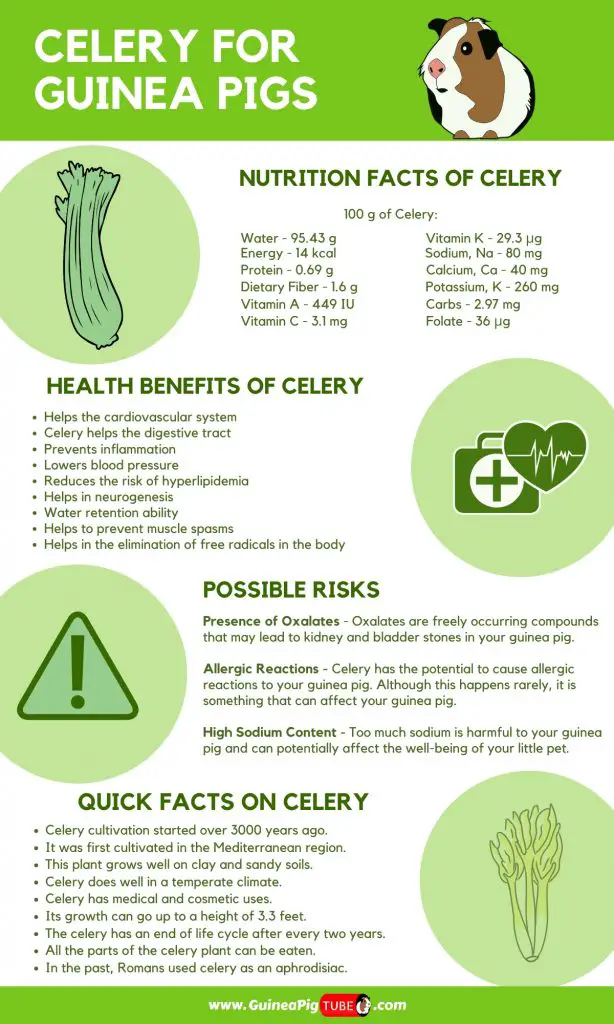
With food, you should be careful what to choose. If you are not sure what to feed them but believe your little piggies deserve some great treats, check our Helpful Guide to the Best Guinea Pig Treats to get some ideas.
We have also made a full list of foods that guinea pigs can and can’t eat (150+ Types of Foods). Be sure to also check our recommended products page for everything you will ever need to assure a happy life for your Guinea Pigs. Hope this information was helpful and you have found the answer you were looking for.
List of Sources
Diet Composition and Mineral Balance in Guinea Pigs
A Review of the Antioxidant Activity of Celery ( Apium Graveolens L)
Chemistry, Technology, and Nutraceutical Functions of Celery (Apium Graveolens L.): An Overview
Comparative Study of Minerals and Some Nutrients in Organic Celery and Traditional Celery
